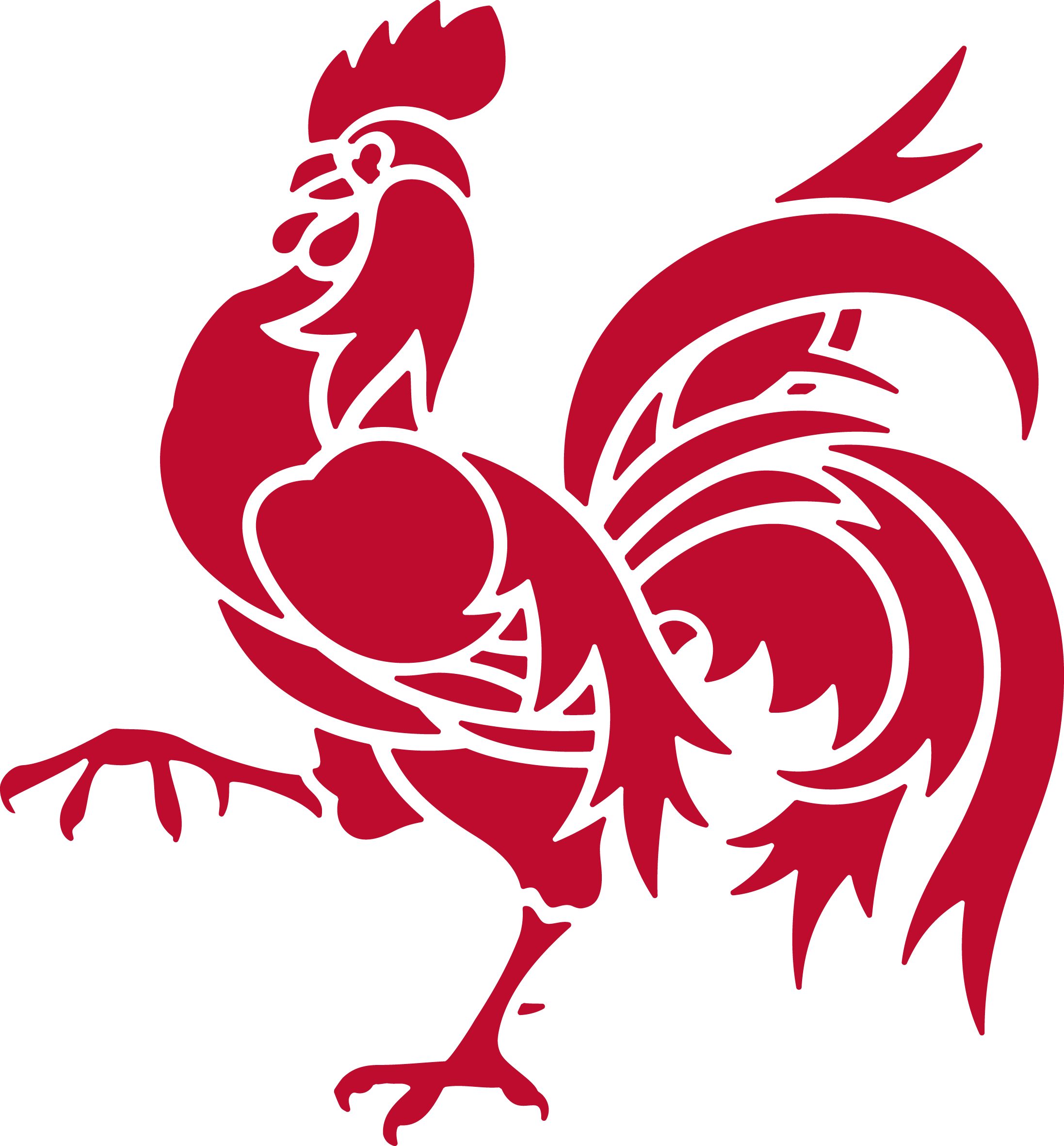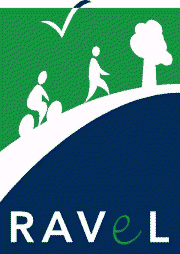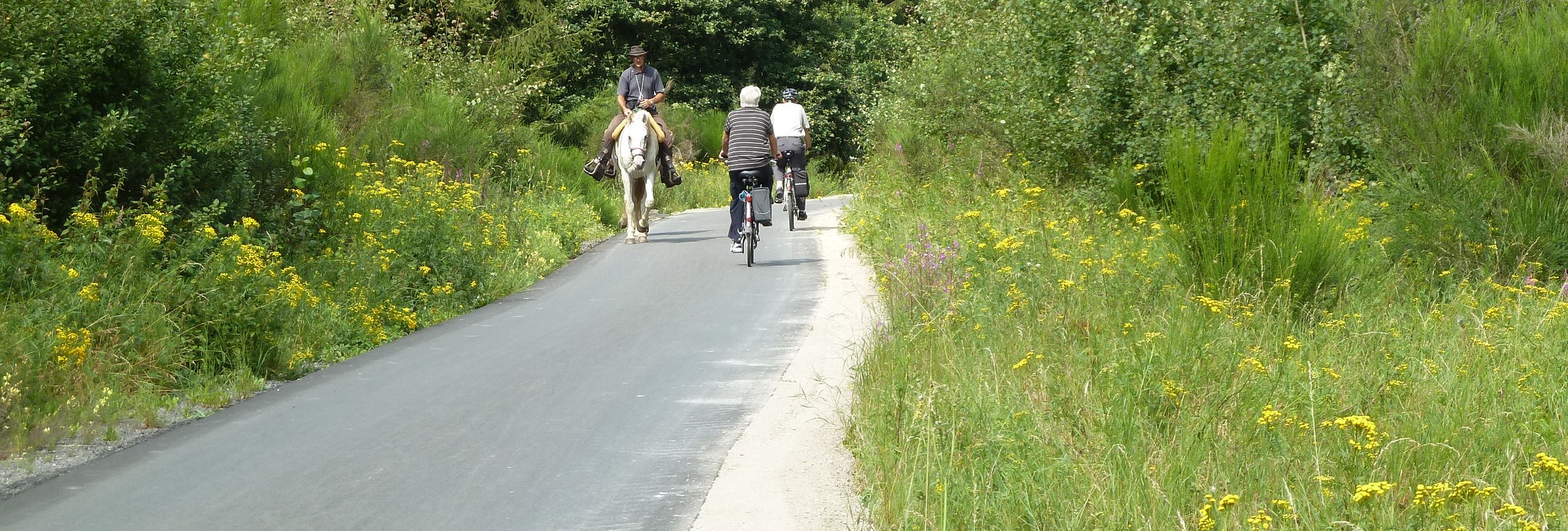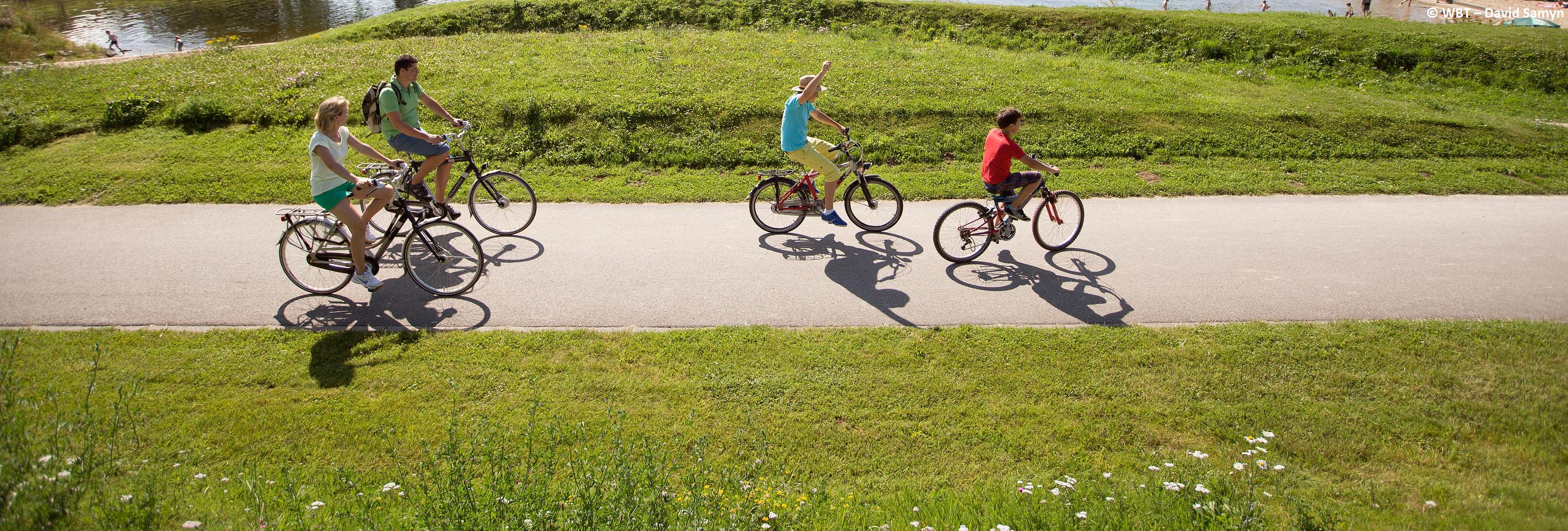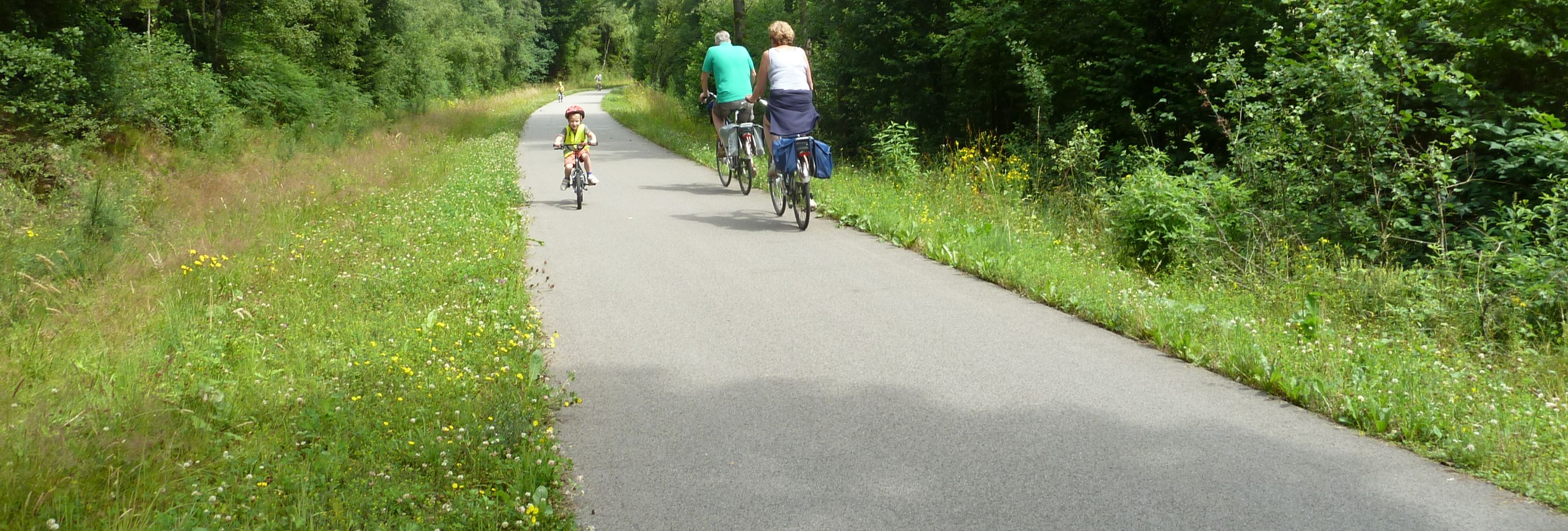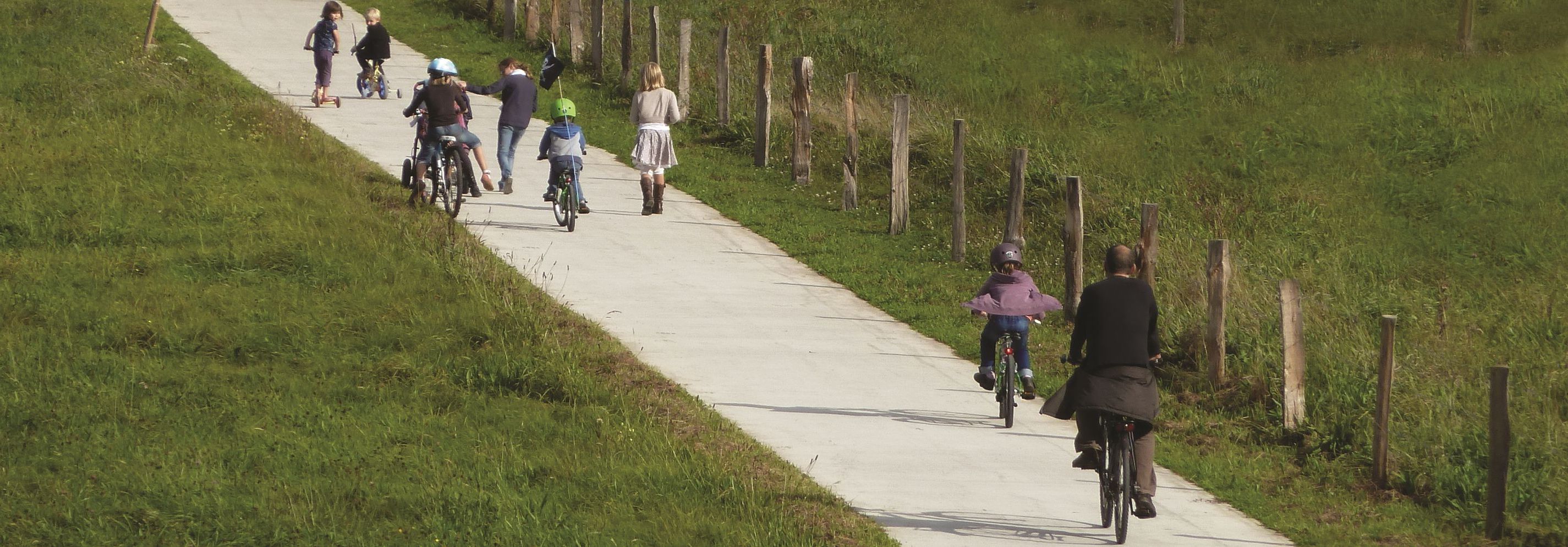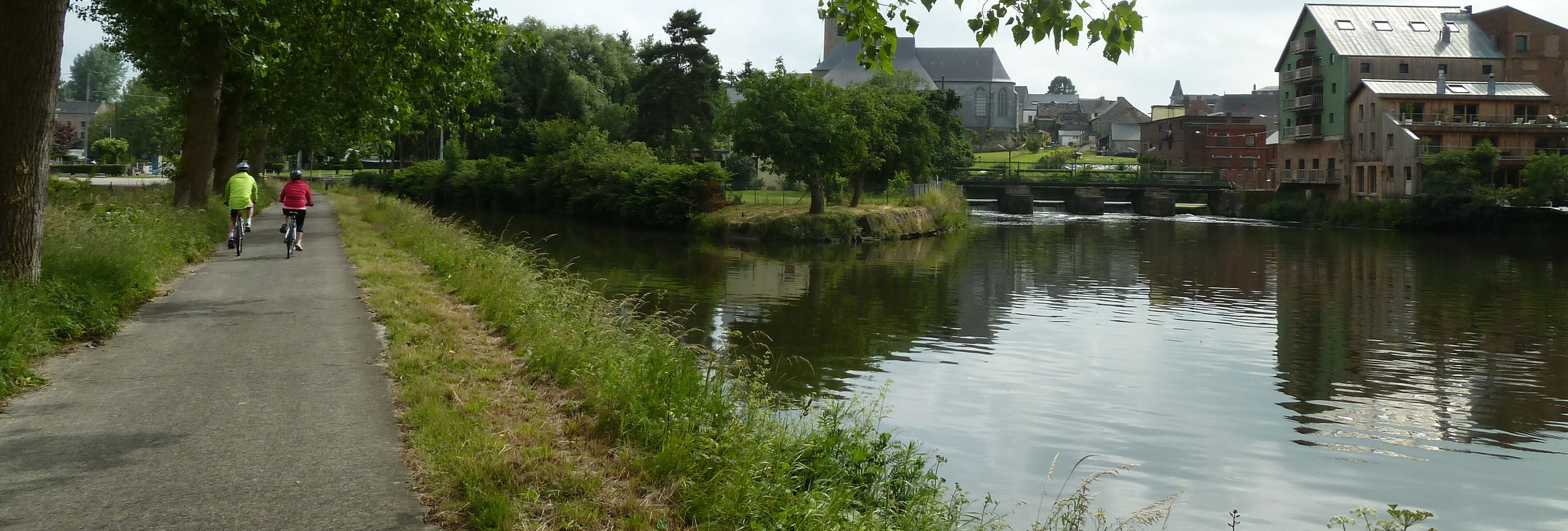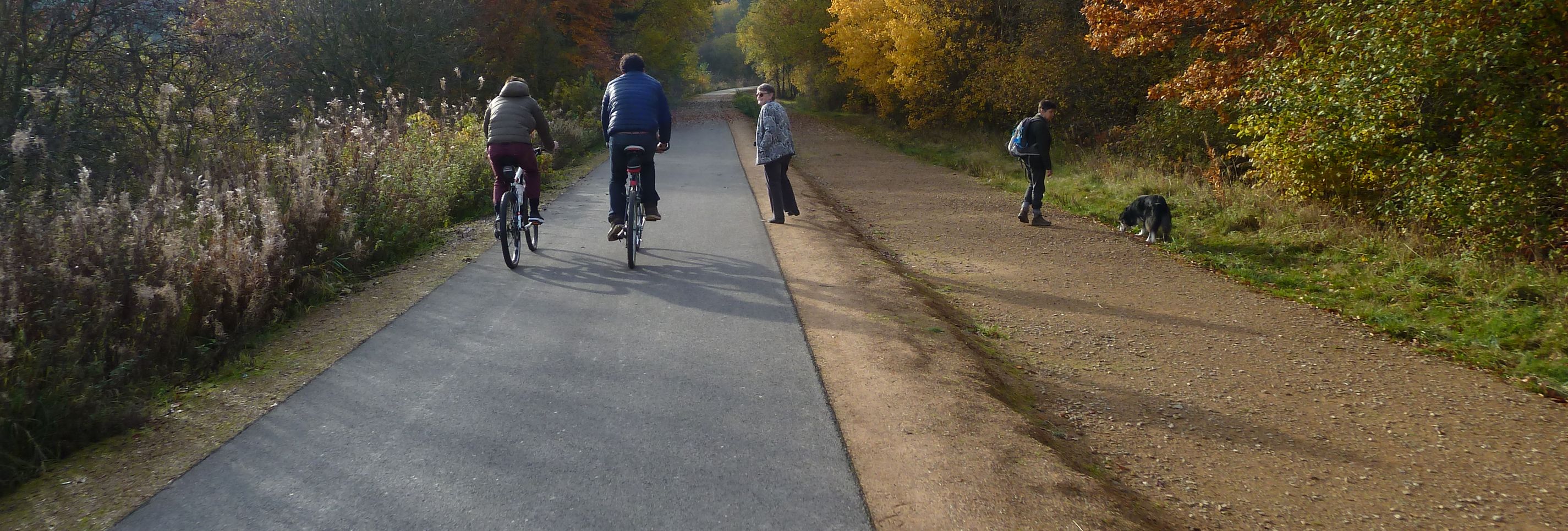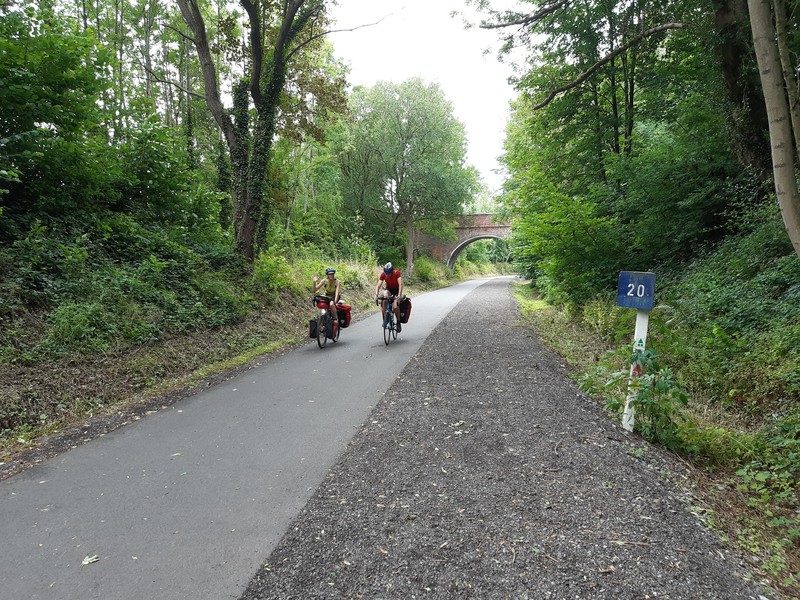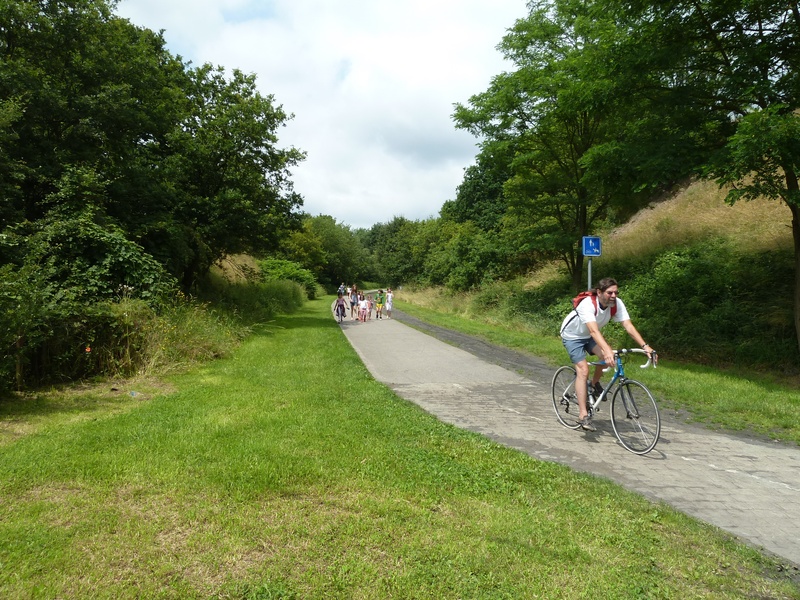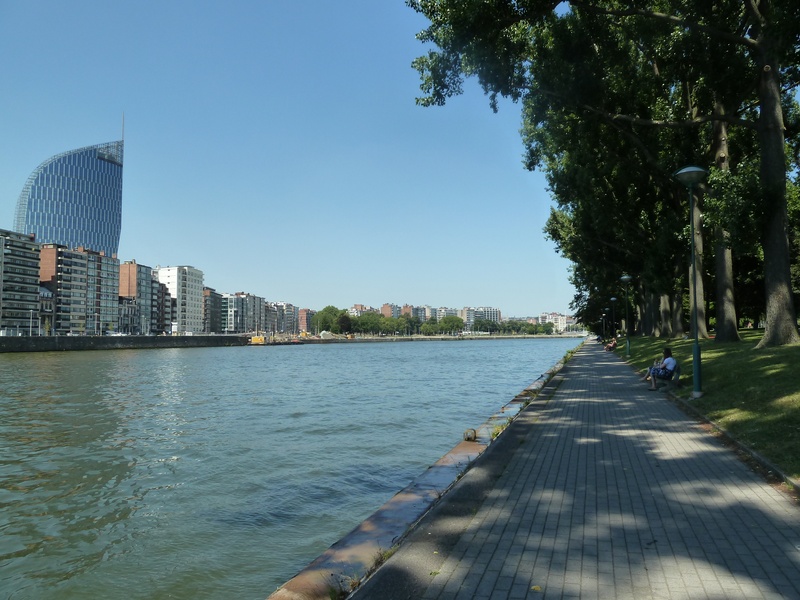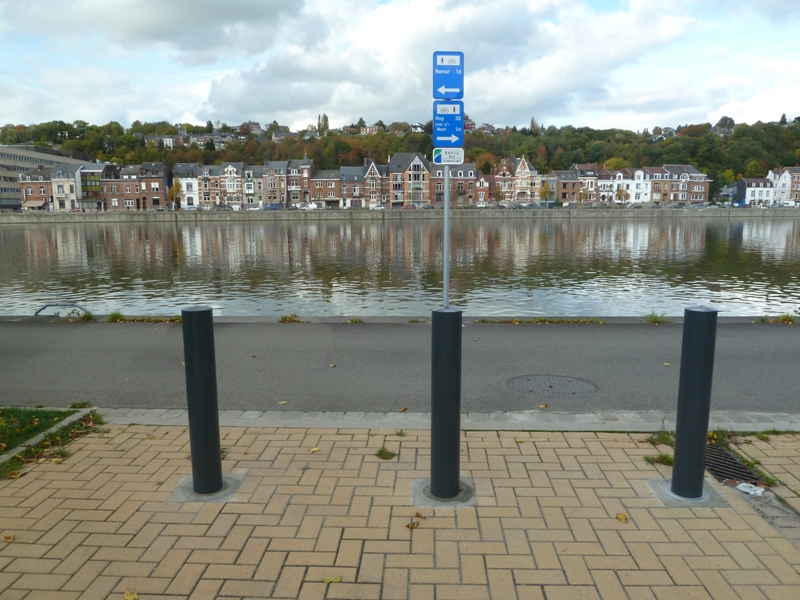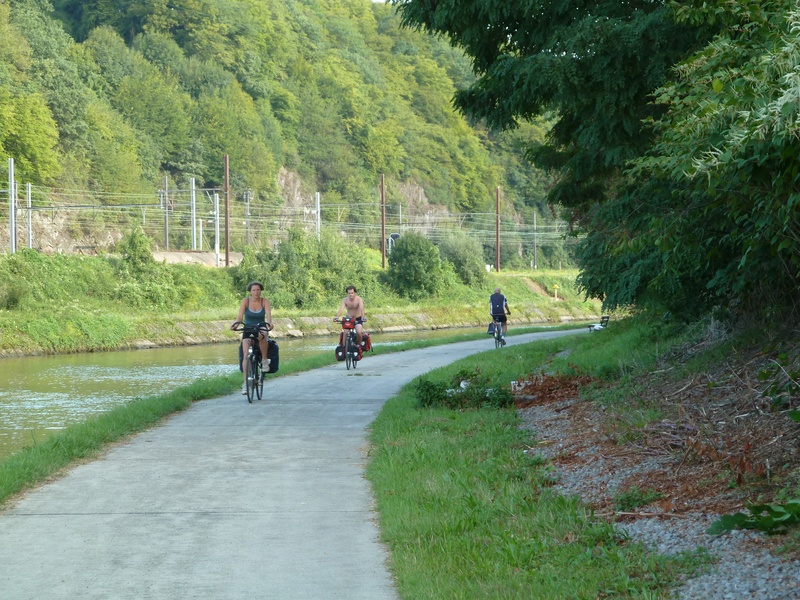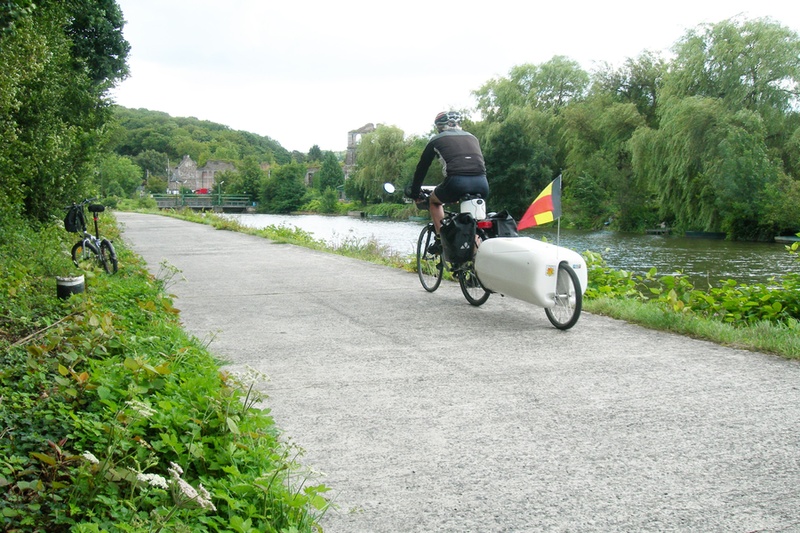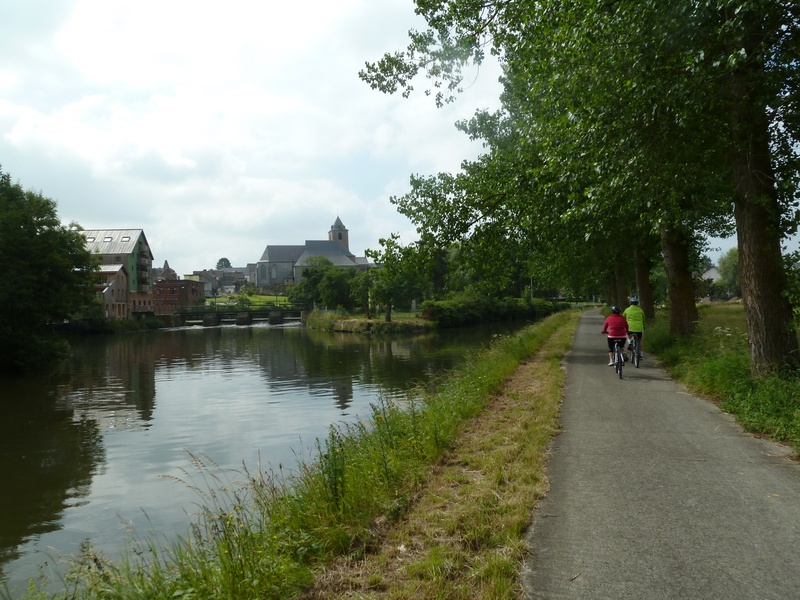Find my route
EuroVelo 3

Medium

209 km
La Véloroute des Pélerins
As you leave Aix-la-Chapelle/Aachen, the Pilgrims cycling route takes you to Liège, known as the Cité Ardente owing to its warm, lively atmosphere. You soon reach the highly symbolic ‘Trois Frontières’ or ‘Three Borders’ between Germany, Belgium and the Netherlands. After about 5 kilometres on the Line 39 RAVeL, you join the Plombières mining site and the Line 38 RAVeL which takes you to discover the bocages of the Pays de Herve region in a bright, green setting. Discover the video of Lines RAVeL 38 and 39, the best european greenway 2021 !
The landscape can be admired and appreciated from numerous beauty spots. Upon leaving the Liège area, you follow the Meuse RAVeL and then the Sambre RAVeL. You can gain an overview of the extensive inland waterway and post-industrial heritage of these two valleys and of the cultural diversity to be found in Wallonia in cities such as Namur and Charleroi. Before arriving in France, you will come across unexpected water creatures and birdlife in the restful atmosphere of the rural landscapes along the Upper Sambre.
Interactive Route Map
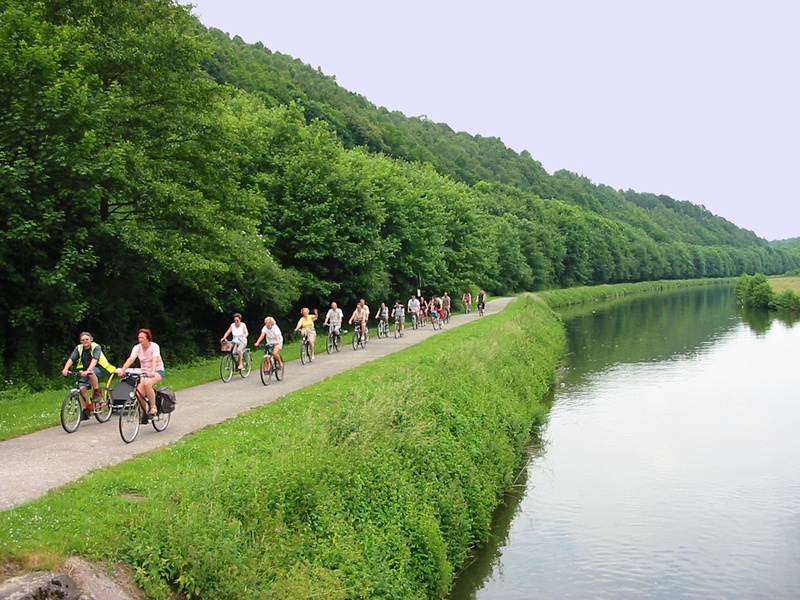
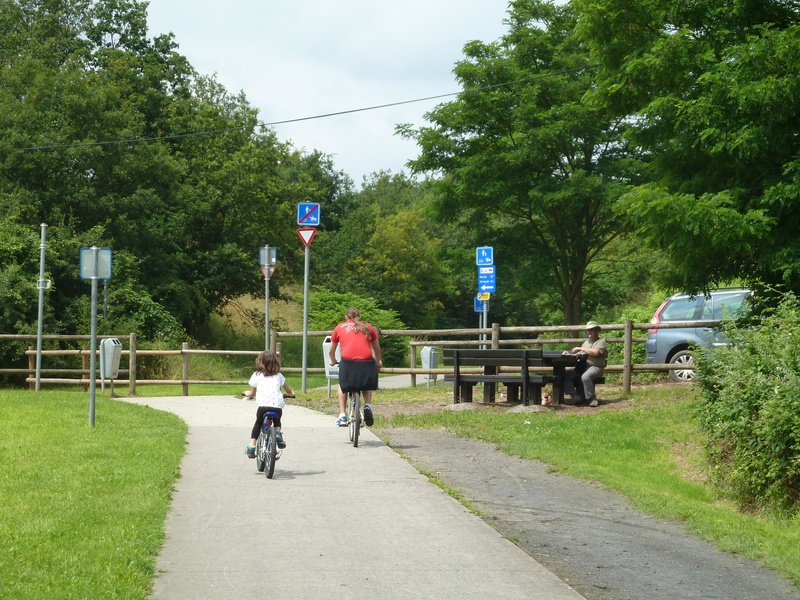
Route Stages : EuroVelo 37
De Aix-la-Chapelle/Aachen (D) à Herve (stage 1)
On the Lines 39 and 38 RAVeL
Starting from the ‘Trois Frontières’ or ‘Three Borders’ panoramic tower, a symbolic spot set on the edge of the village of Gemmenich in Belgium and the towns of Vaals in the Netherlands and Aix-la-Chapelle/Aachen in Germany, you will cross the Pays de Herve region from east to west along Lines 39 and 38 RAVeL. The old railway line 38, one of the first of its kind, is a symbol of the RAVeL and its friendliness. It took years of effort by local people before the public authorities finally began to set up the line.
De Herve à Liège (stage 2)
On the RAVeL of Line 38 and the Ourthe
During this stage, the Line 38 RAVeL gradually leaves the bocages of the Pays de Herve region. From the ‘Hasard’ slag heap between Retinne and Micheroux, Line 38 forms a real ecological corridor and a green lung for local people as the Liège area becomes increasingly densely populated. People on this route for leisure and tourism purposes now rub shoulders with daily users going to work, school, or to do their shopping.
De Liège à Huy (stage 3)
On the Meuse RAVeL and connecting cycle paths
As you head out of Liège on the Quai du Condroz in Angleur, you leave behind you the RAVeL on the left bank of the Ourthe to go towards the Meuse and the future Cité des Métiers (careers advice centre) on the site of Val Benoît. A little further on, you go past the Standard de Liège football stadium.
De Huy à Namur (stage 4)
On the Meuse RAVeL
Not far from the old fortified city of Huy, along the RAVeL on the right bank of the Meuse, stands Andenne, the city of the bear, where stone, water and wood remind us how much the wealth of this region depends on these natural elements. The remarkably restored site of the Moulins de Beez mill complex heralds the entrance into Namur, the capital of Wallonia.
De Namur à Charleroi (stage 5)
On the Sambre RAVeL
Leaving Namur, the route of this stage, which follows its own path, runs through a wide variety of superb landscapes. You go along the RAVeL beside the Sambre, a calm, winding river. A series of locks and bridges lie in the heart of the countryside.
De Charleroi à Thuin (stage 6)
On the Sambre RAVeL
The stage starts not far from Thuin railway station, on the RAVeL along the left bank of the Sambre. Here you can discover much of the history of riverboats and reach Erquelinnes via the locks running along the water.
De Thuin à Maubeuge (F) (stage 7)
On the Sambre RAVeL
From Charleroi onwards, the industrial sites along the Sambre RAVeL quickly give way to pastoral landscapes. The Sambre becomes wilder, with a variety of fauna and flora. Your route takes you past a series of picturesque locks, designed to accommodate the old barges which were once built in the region’s various shipyards.


